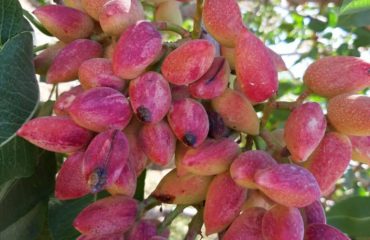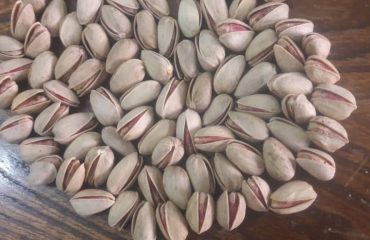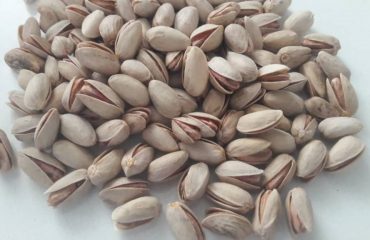Pistachio is a plant that has long been cultivated in various parts of Iran and wild pistachio forests in the northeastern part of Iran, especially on the border of Afghanistan and Turkmenistan. And cultivated. This article attempts to summarize, in a useful and useful way, the practical content of the language. Refer to other articles on Iran Pistachio about the properties of pistachio and other pistachio related materials.
A) Irrigation
Although pistachio is very resistant to water, it should not be neglected, especially at an early age. On average, depending on the soil texture for irrigation water retention depending on the age of the tree is recommended: (except winter)
Tree 1 to 3 years old: irrigation circuit 7-10 days
Tree aged 3 to 6 years: irrigation circuit 12 to 20 days
Tree up to 6 years old: One month’s irrigation circuit
It should be noted that when the irrigation circuit is for one month, a large amount of water is given to the tree in each irrigation to allow moisture to completely penetrate the soil depth.
B) pruning
Pruning means cutting off extra branches and doing this in winter. After forming the tree in the years after transplanting and before fruiting, pruning is important, which involves branching, branching, and removing pests.
Pruning causes the fruit of the tree to coarse and partially bear fruit in different years.
C) Fertilization
The sheep and cow manure used must be completely rotten. Chicken manure should also be mixed with sheep or cow manure and buried in a groove at least 40 cm deep depending on the age of the tree and 40 cm wide at the end of the umbrella. The fertilization season is the winter sleeping season of the trees.
Mixing complete chemical fertilizer (N-p-K) with animal manure is also desirable.
Nitrogen fertilizer (ammonium sulfate and potassium sulfate) in areas with saline water and soil in the second half of May to increase vegetative and reproductive buds, in the second half of July suitable for filling pistachio seeds in fruit trees. The amount of fertilizer consumed by experts is 100 g to 200 g per tree.
The use of liquid and solid micro fertilizers in the growing season of the tree is very appropriate depending on the shortage and consultation with agricultural experts simultaneously with spraying or independently. After harvesting, pistachio fertilizer is recommended for foliar application.
D) reasons for pistachio osteoporosis
1. Lack of male pollen due to male deficiency is the most important factor in pistachio osteoporosis, and you should plant one male tree in the garden for every 10 to 15 female trees. In case of male deficiency, be sure to do artificial pollination.
2- Lack of proper care and attention to the trees, such as low and irregular watering, not fertilizing the trees and not pruning the trees and overcoming pests in the garden will cause pistachio kernels to fill up or sprout next year.
E) Important pistachio pests
1- Pistachio psyllis, a small yellow insect that is currently causing the most damage and causing severe damage to the foot of the tree.
2. Pistachio mites, which this pest is not visible to the ordinary eye, and the signs that the leaves are first dark green and then leathery.
3. Pistachio pomaceae, this pest is fully visible on leaves and clusters, and the tree under attack is often empty and half-kernel.
It is very useful to fight acne with a ratio of 2.5 to 2 per thousand. It is important to note that it is important to combat any pest with expert agricultural experts to recommend the poison and the time of spraying.
F) Pistachio harvest
1. Harvest the pistachio when it is complete.
2. Start harvesting in the early hours of the day and place the harvested product under a shade or cool place.
3 – Remove pest-infested areas in a separate garden.
4- Transfer the harvested product immediately to the pistachio processing centers, which are fully automated and hygienic so that it can be peeled and separated immediately. This way the hard shell color of white pistachio will have a good market.
Introduction: Pistacia vera belongs to the Anacardiaceae family. The genus Pistacia has 11 species, all of which are secreted by turpentine or turpentine. The pistachio tree is composed of comb leaves and the pistachio fruit is botanically classified as shaft fruit. The pistachio tree is two-sided and requires both male and female trees to produce fruit. Pistachio flowers lack petals and nectar glands and do not attract bees and flower pollen is dispersed by the wind. The pistachio tree is a small leaf, crawls in autumn and sleeps in winter. The rooting of pistachio tree is axial and vertical and the sub-root production power in pistachio tree is weak. The early stage of the pistachio tree is long, producing few fruit trees by the age of five and starting from the age of 10 to 12 with complete and economical fruiting. The most important species of the genus Pistacia are: P. vera or common pistachio, P. khinjuk or chatlong or ksur, P..mutica or pistachio, P.atlantica, P.terebinthus. P. integerrima The most important pistachio cultivars in Iran are: Oohedi, Kalle Ghuchi, Akbari, Ahmad Aghaei, Momtaz, Badami Zarand, Shah Pasand, Sefid pistachio nogh, Khangari Damghan and Qazvin. The cold requirement of pistachio tree varied from 600 hours at temperature below 7 ° C for Kalle Ghuchi to 1200 hours at temperature below 7 ° C for Akbari cultivar with an average of 1000 hours below 7 ° C. it is possible . Lack of cooling requirement for pistachio tree can delay flowering, irregular flowering, decrease leaf number, abnormal and simple leaf production and so on. Pistachio cultivation is carried out from 27 degrees north to 42 degrees north. Most pistachio trees are at an altitude of 900-900 meters above sea level. The pistachio tree can withstand temperatures of 45 ° C in summer and -20 ° C in winter. The maximum relative humidity must be less than 35% for maximum yield.




